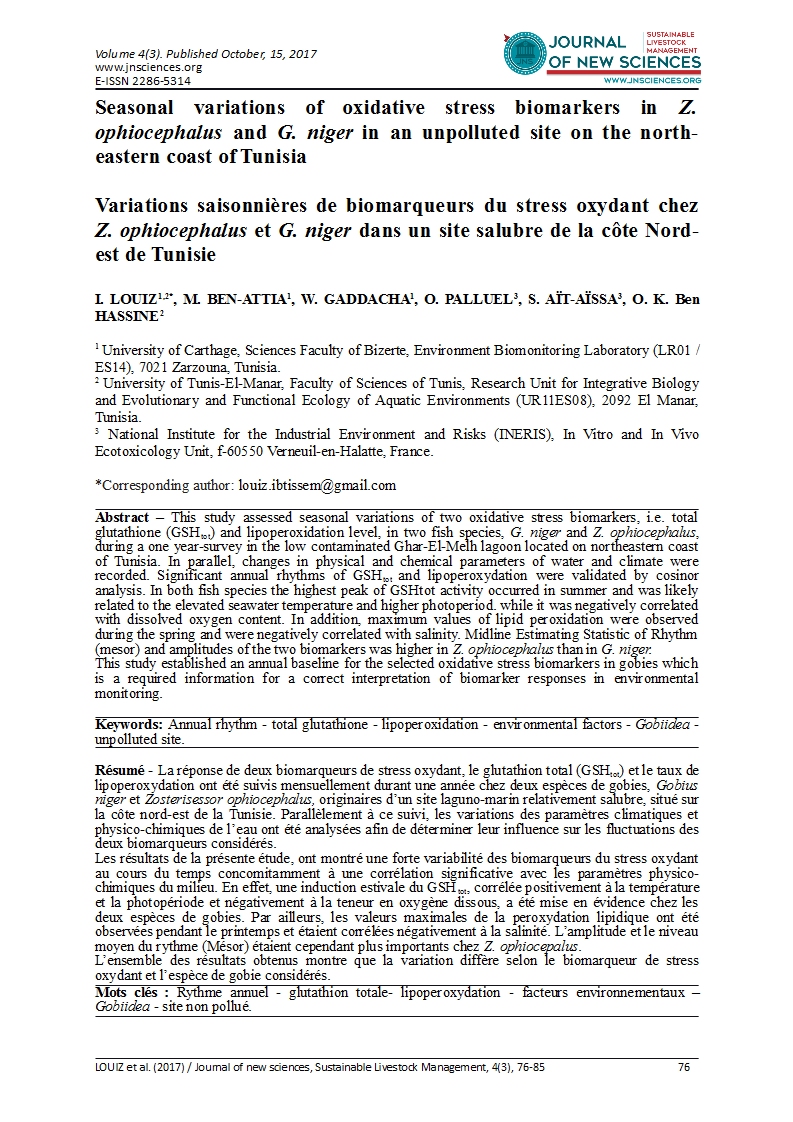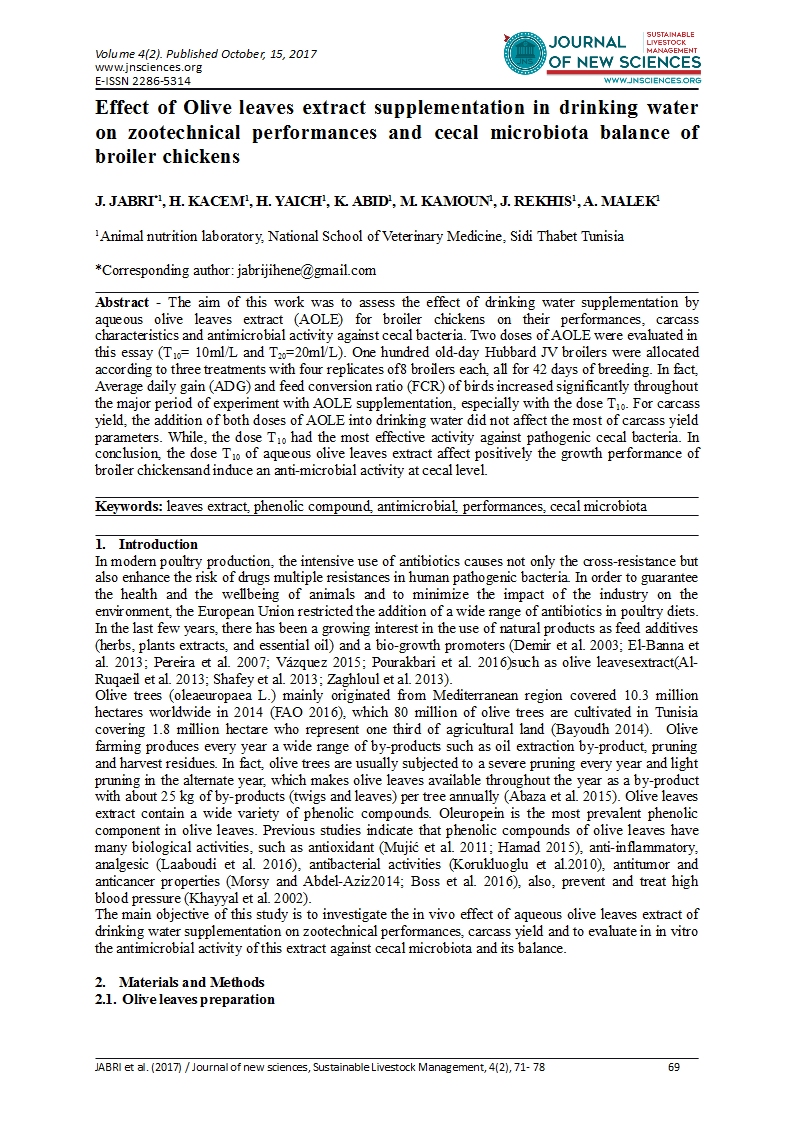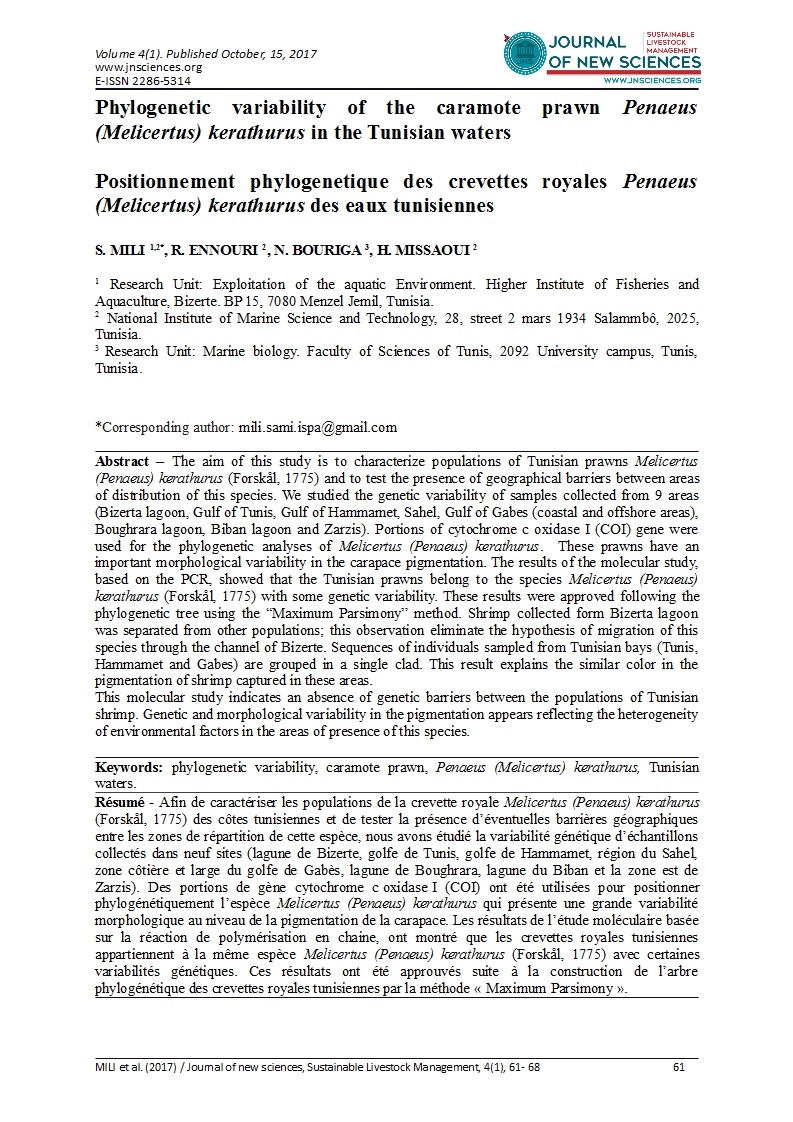- Category: Volume 4
- Hits: 4481
Seasonal variations of oxidative stress biomarkers in Z. ophiocephalus and G. niger in an unpolluted site on the north-eastern coast of Tunisia

Variations saisonnières de biomarqueurs du stress oxydant chez Z. ophiocephalus et G. niger dans un site salubre de la côte Nord-est de Tunisie
I. LOUIZ1,2*,
M. BEN-ATTIA1,
W. GADDACHA1,
O. PALLUEL3,
S. AÏT-AÏSSA3,
O. K. Ben HASSINE2
1 University of Carthage, Sciences Faculty of Bizerte, Environment Biomonitoring Laboratory (LR01 / ES14), 7021 Zarzouna, Tunisia.
2 University of Tunis-El-Manar, Faculty of Sciences of Tunis, Research Unit for Integrative Biology and Evolutionary and Functional Ecology of Aquatic Environments (UR11ES08), 2092 El Manar, Tunisia.
3 National Institute for the Industrial Environment and Risks (INERIS), In Vitro and In Vivo Ecotoxicology Unit, f-60550 Verneuil-en-Halatte, France.
Abstract – This study assessed seasonal variations of two oxidative stress biomarkers, i.e. total glutathione (GSHtot) and lipoperoxidation level, in two fish species, G. niger and Z. ophiocephalus, during a one year-survey in the low contaminated Ghar-El-Melh lagoon located on northeastern coast of Tunisia. In parallel, changes in physical and chemical parameters of water and climate were recorded. Significant annual rhythms of GSHtot and lipoperoxydation were validated by cosinor analysis. In both fish species the highest peak of GSHtot activity occurred in summer and was likely related to the elevated seawater temperature and higher photoperiod. while it was negatively correlated with dissolved oxygen content. In addition, maximum values of lipid peroxidation were observed during the spring and were negatively correlated with salinity. Midline Estimating Statistic of Rhythm (mesor) and amplitudes of the two biomarkers was higher in Z. ophiocephalus than in G. niger. This study established an annual baseline for the selected oxidative stress biomarkers in gobies which is a required information for a correct interpretation of biomarker responses in environmental monitoring.
Keywords: Annual rhythm, total glutathione, lipoperoxidation, environmental factors, Gobiidea, unpolluted site.
Résumé - La réponse de deux biomarqueurs de stress oxydant, le glutathion total (GSHtot) et le taux de lipoperoxydation ont été suivis mensuellement durant une année chez deux espèces de gobies, Gobius niger et Zosterisessor ophiocephalus, originaires d’un site laguno-marin relativement salubre, situé sur la côte nord-est de la Tunisie. Parallèlement à ce suivi, les variations des paramètres climatiques et physico-chimiques de l’eau ont été analysées afin de déterminer leur influence sur les fluctuations des deux biomarqueurs considérés.
Les résultats de la présente étude, ont montré une forte variabilité des biomarqueurs du stress oxydant au cours du temps concomitamment à une corrélation significative avec les paramètres physico-chimiques du milieu. En effet, une induction estivale du GSHtot, corrélée positivement à la température et la photopériode et négativement à la teneur en oxygène dissous, a été mise en évidence chez les deux espèces de gobies. Par ailleurs, les valeurs maximales de la peroxydation lipidique ont été observées pendant le printemps et étaient corrélées négativement à la salinité. L’amplitude et le niveau moyen du rythme (Mésor) étaient cependant plus importants chez Z. ophiocepalus. L’ensemble des résultats obtenus montre que la variation diffère selon le biomarqueur de stress oxydant et l’espèce de gobie considérés.
Mots clés : Rythme annuel, glutathion totale, lipoperoxydation, facteurs environnementaux, Gobiidea, site non pollué.


